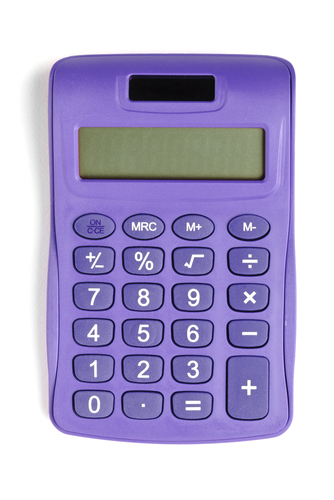Have you ever run track?
Do you know what your best time was?

At EdPlace's Sports Day, students participated in the 100-metre dash event.
Their times were recorded and organised into the following table:
| Time t [seconds] | Frequency |
|---|---|
| 0 ≤ t < 11 | 5 |
| 11 ≤ t < 13 | 45 |
| 13 ≤ t < 15 | 110 |
| 15 ≤ t < 17 | 90 |
| 17 ≤ t < 20 | 55 |
How could we calculate the mean?
Well, we know that mean is the arithmetic average.
That means we calculate it by dividing the sum of all the data points (times in this example!) by how many numbers we have (in this case the number of data points = total number of students!):
Mean = Sum of all data points ÷ Total number of data points

Let's start with finding the total number of students first.
The table tells us that 5 students had a time less than 11 seconds, 45 students between 11-13 seconds and so on.
So the frequency column tells us how many students we have.
If we want the total number of students, we just need to add all the frequencies together!
There are 5 + 45 + 110 + 90 + 55 = 305 students altogether.
Now we need to find the sum of all the numbers!
| Time t [seconds] | Frequency |
|---|---|
| 0 ≤ t < 11 | 5 |
| 11 ≤ t < 13 | 45 |
| 13 ≤ t < 15 | 110 |
| 15 ≤ t < 17 | 90 |
| 17 ≤ t < 20 | 55 |
But wait - what are the numbers?!
We know that in the second line of the table, there are 45 numbers between 11 and 13.
But we don't know exactly what they are.
So we will only be finding the estimate of the mean.
To do that, we take the midpoint from the interval, i.e. 12 which is the number in the middle between 11 and 13.
We could also calculate it by adding 11 and 13 and then dividing that by 2: (11 + 13) ÷ 2 = 24 ÷ 2 = 12
We do this because since there are 45 numbers between 11 and 13, we can say there are 45 numbers roughly around 12.
Since we want their sum, we then multiply 45 and 12:
45 x 12 = 540
We repeat this process with all the lines in the table.
That's quite a lot of calculations, isn't it?
Let's make it a little more organised then.
First, let's find all the midpoints and make another column in the table for them:
| Time t [seconds] | Frequency | Midpoint |
|---|---|---|
| 0 ≤ t < 11 | 5 | 5.5 |
| 11 ≤ t < 13 | 45 | 12 |
| 13 ≤ t < 15 | 110 | 14 |
| 15 ≤ t < 17 | 90 | 16 |
| 17 ≤ t < 20 | 55 | 18.5 |
You can see that all the midpoints are calculated by adding the two numbers at the ends of the interval together and then dividing by 2:
(0 + 11) ÷ 2 = 11 ÷ 2 = 5.5
(11 + 13) ÷ 2 = 24 ÷ 2 = 12
(13 + 15) ÷ 2 = 28 ÷ 2 = 14
(15 + 17) ÷ 2 = 32 ÷ 2 = 16
(17 + 20) ÷ 2 = 37 ÷ 2 = 18.5
Now we multiply these by their respective frequencies so we can get the sum:
| Time t [seconds] | Frequency | Midpoint | Frequency × Midpoint |
|---|---|---|---|
| 0 ≤ t < 11 | 5 | 5.5 | 5 x 5.5 = 27.5 |
| 11 ≤ t < 13 | 45 | 12 | 45 x 12 = 540 |
| 13 ≤ t < 15 | 110 | 14 | 110 x 14 = 1540 |
| 15 ≤ t < 17 | 90 | 16 | 90 x 16 = 1440 |
| 17 ≤ t < 20 | 55 | 18.5 | 55 x 18.5 = 1017.5 |
This is exactly how we'd lay it out in the exam - not only for us to keep organised but also to make it easy for the examiner to award us marks!
To then get the total sum of all the numbers, we add up all of the numbers in the last column:
27.5 + 540 + 1540 + 1440 + 1017.5 = 4565
So now we have:
Sum of all the data points = 4565
Total number of data points (students) = 305
How do we now get the estimate of the mean?
That's right, we divide them!
4565 ÷ 305 = 14.97 s is the estimate of the mean.
Phew! That was a lot of work, wasn't it?!

Let's sum up all the steps:
1) Add all the numbers in the frequency column to get the total number of data points.
| Time t [seconds] | Frequency |
|---|---|
| 0 ≤ t < 11 | 5 |
| 11 ≤ t < 13 | 45 |
| 13 ≤ t < 15 | 110 |
| 15 ≤ t < 17 | 90 |
| 17 ≤ t < 20 | 55 |
5 + 45 + 110 + 90 + 55 = 305
2) Find the midpoints for all the intervals and organise them in a third column.
| Time t [seconds] | Frequency | Midpoint |
|---|---|---|
| 0 ≤ t < 11 | 5 | 5.5 |
| 11 ≤ t < 13 | 45 | 12 |
| 13 ≤ t < 15 | 110 | 14 |
| 15 ≤ t < 17 | 90 | 16 |
| 17 ≤ t < 20 | 55 | 18.5 |
If we can't spot what the number in the middle is, we add the two numbers at the ends of the interval and divide that by 2 - that always works!
e.g. (0 + 11) ÷ 2 = 11 ÷ 2 = 5.5
3) Multiply frequency with the midpoint for each line in the table - make this the fourth column of the table.
| Time t [seconds] | Frequency | Midpoint | Frequency × Midpoint |
|---|---|---|---|
| 0 ≤ t < 11 | 5 | 5.5 | 5 x 5.5 = 27.5 |
| 11 ≤ t < 13 | 45 | 12 | 45 x 12 = 540 |
| 13 ≤ t < 15 | 110 | 14 | 110 x 14 = 1540 |
| 15 ≤ t < 17 | 90 | 16 | 90 x 16 = 1440 |
| 17 ≤ t < 20 | 55 | 18.5 | 55 x 18.5 = 1017.5 |
4) Add all of the results in the fourth column (i.e. the frequency x midpoint column) to get the sum of all the data points.
27.5 + 540 + 1540 + 1440 + 1017.5 = 4565
5) Finally, divide the sum of all the data points by total number of data points to get the estimate of the mean.
4565 ÷ 305 = 14.97 s
Ready to grab your calculator and get some practice in?








